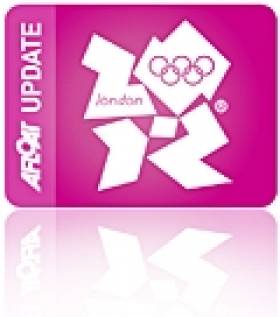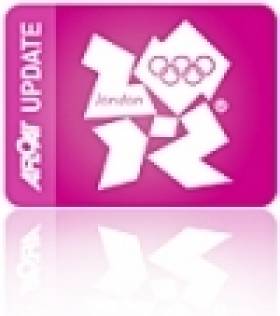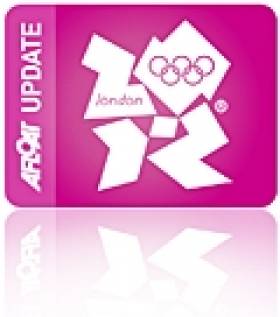Displaying items by tag: Ross Hamilton
Irish Olympic Crews Seeking Qualification in Perth
#OLYMPIC–Ireland takes its place among the world's sailing nations in Perth, Western Australia this weekend for the start of a two-week long sailing championships that is a do or die regatta for Ireland's Olympic squad intent on competing at the London Olympic regatta next July.
There are high hopes that at least two crews will qualify at the ISAF world championships where over 75% of qualification slots are available. Irish officials say Peter O'Leary and David Burrows in the Star keelboat along with Annalise Murphy in the Laser Radial are not only front runners for qualification next week but also Olympic medal prospects.
There is no question both are consistent top 10 performers at world level. There is no question either of their heavy weather performances and as Perth is famous for its strong winds team insiders say a world class result for Ireland is possible.
Murphy won bronze at the Sail for Gold (a dry run of the Olympic regatta) in August and O'Leary won gold (albeit with a different crew) at the same event in 2010.
In the 49er dinghy Ryan Seaton and Matt McGovern are also aiming for the London Games and qualification here is by no means ruled out for the Belfast Lough pair.
Other Irish boats competing in Perth for the London ticket are two times Olympian Ger Owens from Dun Laoghaire now sailing with Howth's Scott Flanigan in the 470 dinghy James Espey will compete in the Laser, while Ross Hamilton will sail in the Finn
First into action on Monday morning will be Hamilton in the Finn. Murphy also has her first race in a 100-strong Laser Radial fleet.
Top international sailors put on a show of strength in Perth's Forrest Place on Friday to help launch the Perth 2011 ISAF Sailing World Championships.
Several thousand people in the CBD watched as the athletes paraded from Barrack Street jetty to the heart of Perth, where they were warmly welcomed by a team of hosts, including Western Australian Premier Colin Barnett.
The athletes had sailed upriver on Rottnest Island ferries from Fremantle, passing under bridges lined with well-wishers, and paraded through the city past a crowd of cheering locals, all braving the 33C heat.
While the Japanese and Korean teams posed for a combined photograph, the New Zealand men squeezed in some rugby practice in the backdrop.
Onlookers lined the streets as the athletes walked behind their national flags, occasionally cheering and posing for photographs.
They were led by a Royal Australian Navy band — described by the Chief Petty Officer Gabe Kicsak as a "rock band on steroids".
Irish flag bearer Scott Flanagan twisted the flag in his hands as he joked that the Perth heat was nothing compared to Ireland's "tropical climate".
Also in the procession was Hungarian windsurfer Aron Gadorvalvi, who could be seen getting a workout with his toddler daughter's pushchair.
Drifting in and out of the procession during the march were Denmark's athletes stocking up on ice-cream.
Among those in the crowd were Trinity Sale (9) and brother Mitchell (6) cheering on their dad, Australian 49er crewman Marty Sale, who will compete with his skipper Duncan Head.
Trinity, who attends Perth's Rawlinson Primary School, said: "I liked it a lot, especially as my dad was marching."
Forrest Place was awash with colour, flags and cameras small and large as the athletes made their entry.
"The Fremantle Doctor is calling — may you all achieve your dreams," ISAF President Goran Petersson said, referring to the world championships and Olympic selection at stake.
The ceremonial part of the event was opened by three Aboriginal dancers, with Dr Richard Walley on the didgeridoo and performing the traditional Welcome to Country.
The Australian anthem was sung by talented Perth busker, Fiona Mariah, a former contestant on a national television talent show.
Marching for the first time were six nations — Kyrgyzstan, St Lucia, Trinidad & Tobago, Cook Islands, Kazakhstan and Montenegro.
The athletes' oath was taken by three-time world champion Marcelien Bos-de-Koning (NED) and the officials' oath by jury chairman Bernard Bonneau.
Perth 2011 chairman Ian Campbell quoted Ernest Hemmingway in his welcome address — from a 1936 magazine article on why people go to sea. "The sea was the last wild place left."
He also quoted at length from a speech made by former USA President John F Kennedy after Australia's challenger Gretel took one race off the American defender Weatherley in the 1962 America's Cup at Newport, Rhode Island.
"It is an interesting biological fact that all of us have in our veins the exact same percentage of salt in our blood that exists in the ocean and therefore we have salt in our blood, in our sweat and in our tears.
"We are tied to the ocean and when we go back to the sea, whether it is to sail or to watch it, we are going back from whence we came."
Mr Campbell said: "I wish all the athletes lots of sweat, as little blood as possible, and tears of joy as you enjoy the magnificent conditions off Fremantle in the coming weeks."
India's coach Mohit Nautiyal said he was confident in his country's team.
"The Finn is definitely our strongest event," Nautiyal said.
"We are very hopeful for gold but [winning] is not very important. We are here because we enjoy sailing," China's team manager Ye Xiao said.
It was clear that most athletes admired the Perth surroundings.
Michael Hestbaek (DEN), a Star class competitor, said: "I originally came (to the opening ceremony) with the idea to have a sail up the river and see the beautiful and spectacular scenery."
"I'm sure there will be more to come," said the three-time world champion in Laser (2) and 49ers (1).
And on his hopes at Perth 2011: "I expect at least three teams to make the top 10 and hope some will medal. I'm hoping to be one of them."
Athletes then flooded the numerous Perth eateries for lunch before catching a train back to Fremantle.
Irish Sailors Encamped in Fremantle
The Irish Times reports that Ireland's sailing team have encamped to Fremantle in western Australia for some invaluable training ahead of the ISAF World Championships in Perth next year.
Though the Irish contingent is a much smaller one than that at Weymouth in August - the scheduled venue for sailing at the 2012 Olympics - and reports of shark sightings and attacks in the area are apparently on the rise, those who did make the trip were determined not to waste the opportunity.
“Between the breeze and the nice temperature our training is much more effective than back at home,” said 49er skiff crewer Matt McGovern.
He joins fellow 49er Ryan Seaton and Laser Radial sailor Annalise Murphy at the Perth International Regatta this week. Single-hander Ross Hamilton is also competing but outside the auspices of the Irish Sailing Association’s Olympic group.
Murphy Heading for Australian Regatta
The National Yacht Club's Annalise Murphy (Laser Radial) travelled to Australia last weekend for the Perth International Regatta http://www.perth2011.com/ which starts on the 16th of this month. The aim is to gain valuable experience at the venue which will host the December 2011 ISAF World Championships and which will be a vital qualifying event for the the 2012 London Olympic games.
Also heading for Perth is the Royal St. George's Ben Lynch in the high speed 49er dinghy.
After Perth, Annalise travels to Melbourne for the season's first ISAF World Cup event which will be run from Sandringham Yacht Club from 12-19th December. Annalise is currently ranked 20th Womens Laser Radial sailor and 1st under 21 in the World and is campaigning full time to represent Ireland in the 2012 London Olympic Games.
Top youth Laser Radial Sailor Ross Vaughan from the Royal North of Ireland YC has gone down as a training partner for Annalise together with her coach Rory Fitzpatrick.
Also taking part in the Perth Regatta are Irish 49er team of Ryan Seaton and Matt Mc Govern (Ballyholme YC) and Ross Hamilton from the RIYC, Dun Laoghaire.






























































